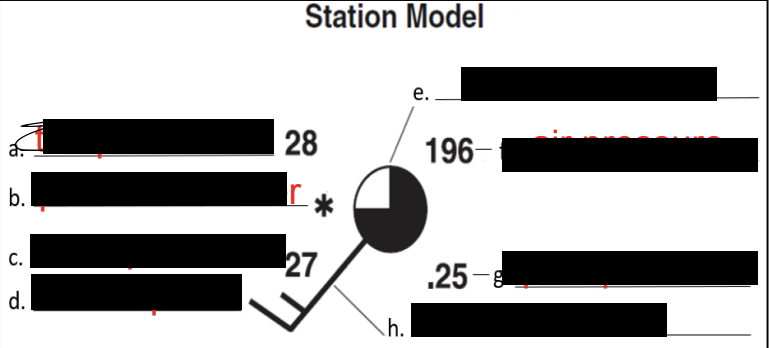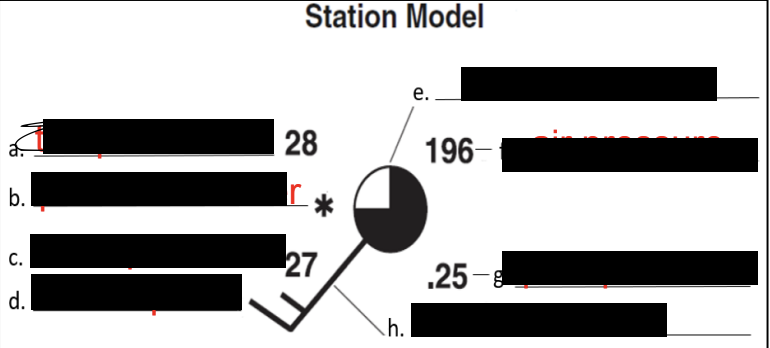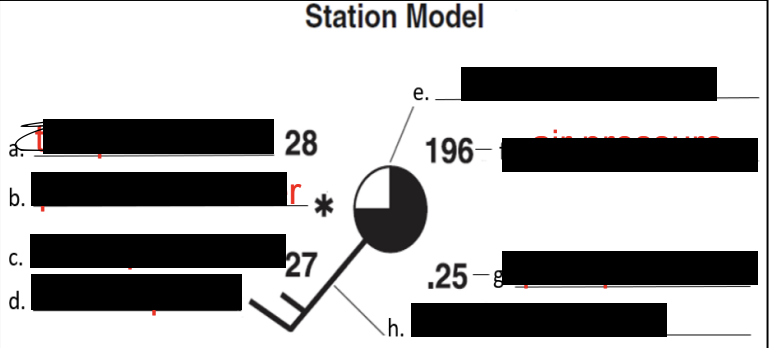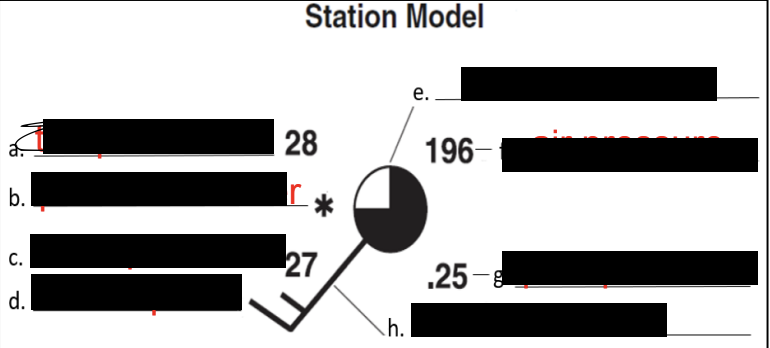ANSWER KEY to REVIEW GUIDE - WEATHER UNIT
1/34
There's no tags or description
Looks like no tags are added yet.
Name | Mastery | Learn | Test | Matching | Spaced |
|---|
No study sessions yet.
35 Terms
The atmosphere can best be described as a mixture of __________.
gases, water vapor, and particles.
The force or push of air molecules on a surface is known as: __________.
air pressure.
When you travel up a mountain the force or push of molecules __________.
decreases.
When you swim to the bottom of a pool the push of molecules __________.
increases.
When you go from 0 to 1000 feet elevation the push of molecules __________.
decreases.
Thermosphere characteristic: __________.
It is the highest layer of the Earth's atmosphere.
Mesosphere characteristic: __________.
It is where most meteors burn up upon entering the atmosphere.
Stratosphere characteristic: __________.
It contains the ozone layer.
Troposphere characteristic: __________.
It is the lowest layer of the atmosphere where all weather occurs.
Wind can form from differences in air pressure. T or F: __________.
True
Wind can form from unequal heating of the Earth. T or F: __________.
True
Wind can form due to geography; such as mountains. T or F: __________.
True
Wind can be measured using a barometer. T or F: __________.
False.
At 78%, the most abundant gas in the Earth’s atmosphere is __________ followed by __________ at 20.9%.
nitrogen, oxygen.
The Earth’s __________ causes the Coriolis Effect, which explains why winds __________ in the Northern hemisphere.
rotation, curve.
Weather is best described as the __________ of the atmosphere at a particular __________ and __________.
state, time, place.
Instruments of weather measure __________, __________, and __________.
temperature, humidity, pressure.
Process B of the Water Cycle: __________. Description: __________.
Condensation, Water vapor cools and forms droplets.
Air Masses are large bodies of air that have similar __________ & __________.
temperature, humidity.
The characteristics of an air mass come from a source region which is described as: __________.
the area over which the air mass forms.
Continental Polar (cP) characteristic: __________.
Cold and dry air mass.
Maritime Polar (mP) characteristic: __________.
Cool and moist air mass.
Continental Tropical (cT) characteristic: __________.
Hot and dry air mass.
Maritime Tropical (mT) characteristic: __________.
Warm and moist air mass.
The cold front is moving __________.
in a southeast direction.
Buffalo, NY would experience (1) __________ and (2) __________ as the front passes.
cooler temperatures, possible precipitation.
A scientist that observes and collects data on current weather conditions and provides a reliable forecast/prediction is called a: __________.
meteorologist.

What does Letter A Represent
Air Tempurature on the station model

What is letter B represent
It represents current weather conditions on the station model

What does letter C. represent on the station model
dew point on the station model

What does Letter D represent
Wind Speed on the station model

what does letter E represent
Cloud Cover in the station model

What does Letter F represent
Air Pressure on the station model

what does letter G represent on the station model
Precipitation on the station model measured in inches

what does letter H represent
Wind Direction on the station model measured in degrees, indicating the direction from which the wind is blowing.